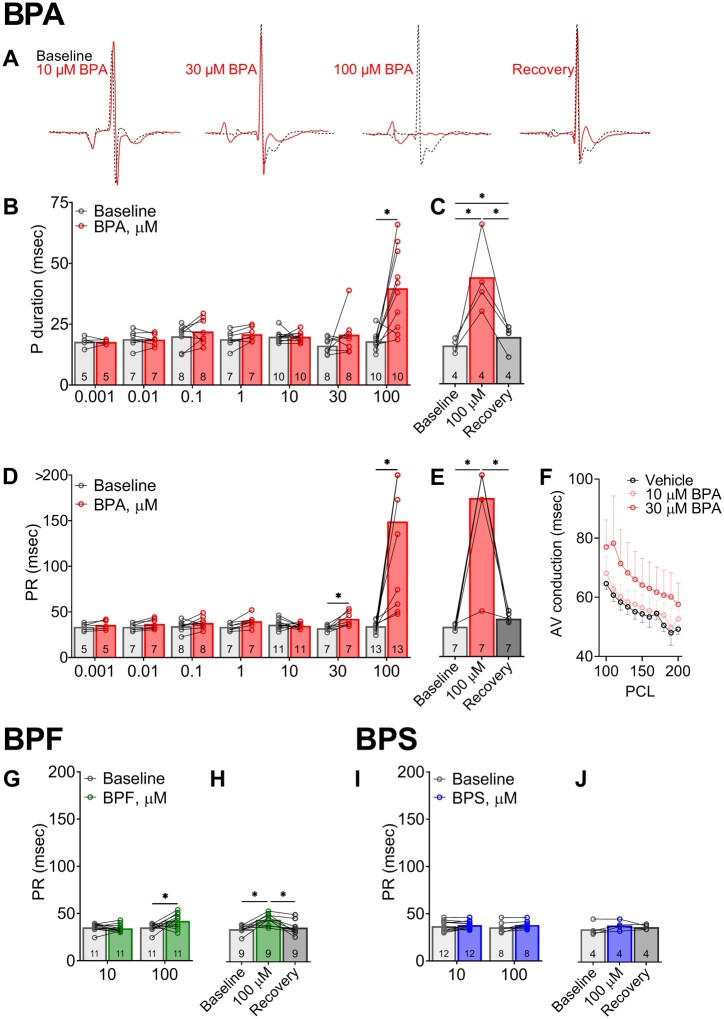Figure 6.
Bisphenol chemical effects on atrial and atrioventricular conduction during sinus rhythm. A, Representative ECG waveform from Langendorff-perfused hearts at baseline, acute BPA exposure (15 min), or recovery (100 µM BPA exposure, followed by 15 min washout). Each waveform pair recorded from the same animal, before and after exposure. B, P duration indicates longer atrial depolarization time at the highest BPA dose (100 µM). C, Slowed atrial conduction after 100 µM BPA exposure recovers after washout. D, The progressive lengthening of PR duration indicates slowed AV conduction following 30–100 µM BPA exposure, often resulting in intermittent 3rd degree heart block (denoted by data point > 200 ms). E, AV conduction slows after 100 µM BPA exposure and recovers after washout. F, AV conduction slowing persists with external pacing to correct for heart rate. G, Atrioventricular conduction slowing occurs at 100 µM BPF concentration and (H) recovers after washout. I and J, BPS exposure had no discernable effect on atrioventricular conduction time. Values reported as mean ± SD. *q < 0.05 as determined by RM-ANOVA with multiple comparisons testing (0.1 FDR). Number of replicates indicated in each bar graph. Abbreviation: PCL, pacing cycle length.

